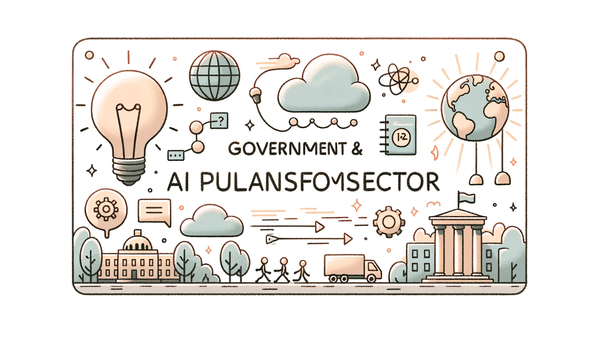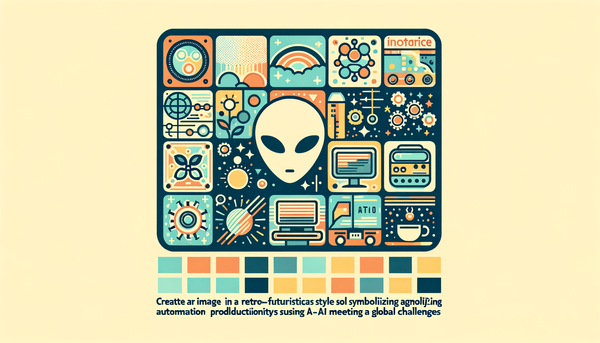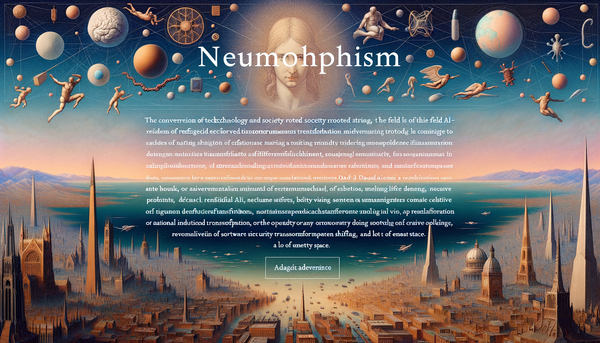Nvidia AI Server Maker Hon Hai Reports Major Sales Surge
In a world where breakthroughs span from refined wearables to transformative industrial AI, technological innovations are shaping lifestyles and business ecosystems in surprising ways.
Revolutionizing Wearables: The Circular Ring 2
Imagine a piece of jewelry that is not only stylish but also highly functional—a smart ring that fits seamlessly into your life. The Circular Ring 2, unveiled at CES 2025, is already creating buzz on crowdfunding platforms like Kickstarter. At an attractive price point of $549 (with discounts up to $310 for early backers), this smart ring is set to rival established competitors like the Oura Ring 4 and Samsung’s Galaxy Ring.
What sets this ring apart is its innovative digital sizing system. Traditional sizing kits, often cumbersome and inaccurate, are replaced by a smartphone-based process that ensures a perfect fit. This leap in convenience is complemented by a sleek wireless charging case, meaning you’re never left with a dead battery at a critical moment. Such features are essential as users increasingly expect technology to blend seamlessly with their daily routines.
Beyond convenience, the Circular Ring 2 promises a suite of advanced health monitoring features. Its capabilities extend to FDA-approved Afib detection and ECG measurements, while its comprehensive sleep, activity, and heart monitoring functionalities make it a must-have for health-conscious individuals. Particularly notable is its refined approach to women's health, where cycle tracking and overall wellbeing insights are prioritized. With a battery life that stretches up to seven days on a single charge, compared to only two in its predecessor, it offers a compelling mix of style and functionality poised to impact how we think about wearable technology.
This significant advancement in wearables is reflective of broader trends in consumer tech innovation. At AI.Biz’s engaging AI innovations corner, we see similar narratives where cutting-edge hardware meets thoughtful design, merging everyday aesthetics with robust technological performance.
Nvidia's Impact on AI and Server Sales
Turning our attention from personal devices to enterprise-level solutions, Nvidia continues to dominate the discussion around AI. Recent reports highlight a 25% surge in sales for Nvidia’s AI server maker, Hon Hai, over a two-month period. This jump underscores the escalating demand for high-performance computing infrastructure that supports AI workloads. As the digital landscape evolves, such developments are crucial, bolstering the ecosystem that powers everything from intelligent smart rings to industrial biorecycling.
Nvidia’s role doesn’t stop at hardware. Their CEO’s comments, combined with impressive performance metrics, point to a future where computational demands will only soar. For those interested in the latest twists in this narrative, you might explore further insights at our coverage on Nvidia’s CEO and rising AI computational demands and Apple’s bold moves in AI as noted in our earnings update.
With an ever-increasing need for computational power, Nvidia’s influence extends into numerous industries. Their innovation in graphics processing units (GPUs) has laid the groundwork for advancements that permeate not only gaming and entertainment but also critical sectors like healthcare, automotive, and scientific research. When we see companies like Hon Hai posting a 25% jump in server sales, it’s a clear signal that industries are actively investing in the infrastructure needed to unlock new frontiers in artificial intelligence.
As Satya Nadella aptly put it,
“AI represents a way to unlock human potential. It allows people to focus on innovation and creativity, while machines take care of repetitive tasks.”
This perspective resonates with the current dynamics, where innovations from Nvidia and its partners ignite progress across diverse verticals.
Telco Transformations: How Tech Mahindra, Nvidia, and AWS Shape the Future
In an era where connectivity drives not only social interactions but also business efficiency, the telecommunications sector is undergoing a radical transformation. A landmark partnership between Tech Mahindra, Nvidia, and AWS is setting the stage for pioneering telco AI models that promise to revolutionize the industry. By leveraging the strengths of each partner, this collaboration is poised to optimize network operations and enhance customer experiences through predictive analytics and real-time decision-making capabilities.
Such initiatives reflect a broader trend where collaborations between tech giants and specialized service providers are commonplace. When three industry leaders unite to solve complex problems, we witness not only an acceleration in innovation but also a pooling of resources that can efficiently address challenges such as network congestion, security, and optimization. The telco sector, influenced by these AI-driven methodologies, will likely see improvements in service quality and operational efficiency.
For professionals keen on the confluence of AI and telecommunications, this partnership is an exemplar of how cross-industry collaboration leads to powerful solutions. It dovetails nicely with the current narrative at AI.Biz’s exploration of Nvidia’s chip advances in China, showcasing how AI is making waves in both consumer and enterprise sectors.
Sustainable Innovation: AI in Biorecycling
In a striking shift from consumer electronics and computing infrastructures, artificial intelligence is steering us toward environmental sustainability. Epoch Biodesign, a U.K.-based startup born from a high school science project, is harnessing AI to tackle one of the planet’s most stubborn challenges: plastic waste. With an impressive $18.3 million Series A funding round under its belt, the company is accelerating the production of plastic-eating enzymes that promise to break down materials such as polyester and nylon.
At the heart of Epoch Biodesign’s innovation is the use of generative AI to sieve through vast swathes of complex biological data, identifying promising enzyme candidates up to 25 times faster than traditional methods. Such advancements exemplify the expansive potential of AI to drive sustainable solutions in a circular economy. This approach not only aims to reduce landfill waste but also to reimagine how synthetic materials are managed and recycled globally.
The startup’s collaboration with fast-fashion retailer Inditex underscores the growing urgency among industries to adopt eco-friendly practices. As companies pivot toward sustainability, the integration of AI in biorecycling is emerging as a game-changer—a proactive measure in the global response to plastic pollution. The planned production facility, set to handle 150 tons of plastic annually, embodies a holistic vision wherein technological and environmental objectives harmoniously coexist.
Many experts see this as a revolutionary shift in industrial recycling. By deploying energy-efficient processes alongside state-of-the-art AI tools, Epoch Biodesign is not just addressing a waste problem; it is rewriting the rules of environmental stewardship. This intriguing intersection of technology and sustainability echoes broader themes at AI.Biz’s in-depth coverage of the latest AI innovations where transformative ideas blend with environmental necessity.
As the journey toward sustainable innovation continues, we are reminded of another insightful observation:
“The question is not whether we will survive this but what kind of world we want to survive in.”
It is in this spirit that startups like Epoch Biodesign embody the optimism and urgency of our times.
Bridging Ecosystems: Windows 11 Pro on Your Mac
Users of Apple’s macOS often face the challenge of accessing software that plays exclusively in the Windows ecosystem. For these users, the recent availability of Windows 11 Pro at an impressive price of just $14.97 (down from $199) marks a significant turning point. This economical offering is particularly transformative for Mac enthusiasts needing Windows-only applications, whether for gaming, work software, or specialized tools that macOS cannot support.
The process to install Windows 11 Pro on a Mac is straightforward. For those with Intel-based Macs, Apple's Boot Camp allows for native installation, providing robust performance for Windows applications. For users who prefer to keep both systems running concurrently, virtual machines such as Parallels Desktop are an excellent choice, enabling efficient switching between macOS and Windows without the hassle of rebooting. This flexibility not only maximizes productivity but also ensures that user preferences are accommodated without compromise.
Windows 11 Pro’s new features—including an AI-powered assistant, Windows Copilot, advanced multitasking capabilities, and enhanced security measures like BitLocker encryption—demonstrate a commitment to blending performance with user-friendly innovations. The reimagined user interface and the focus on a more integrated, fluid computing experience underscore how even traditional software platforms are evolving with the AI wave.
Moreover, this shift is a reminder that in today’s interconnected tech ecosystems, the boundaries between operating systems are increasingly blurred, and collaborations across these boundaries have the potential to boost overall productivity. Innovative financial strategies like this one are making it easier than ever for users to enjoy the best of both worlds.
Convergence of Innovations: A Holistic Perspective on AI and Technology
When we take a step back and survey the landscape, a vivid picture emerges: artificial intelligence is at the nexus of multiple revolutionary trends. From the wearable revolution spearheaded by devices like the Circular Ring 2, to groundbreaking server innovations driven by companies like Nvidia and collaborations in telco with Tech Mahindra, AI is reshaping the ways we live, work, and interact.
Notably, each of these stories reflects a broader narrative in which technology and sustainability coexist. Epoch Biodesign’s ambitious journey to solve plastic waste with AI-accelerated enzymes is a prime example of how scientific ingenuity can address global challenges while opening the door to entirely new industrial processes. The pattern is clear: innovations in AI, whether in consumer gadgets, server technology or recycling, have far-reaching implications that extend well beyond their immediate applications.
The interplay between hardware advancements and software breakthroughs is reminiscent of a symphony where each note contributes to a larger, harmonious composition. The seamless integration of powerful GPUs, refined wearable sensors, and intelligent biorecycling techniques shows the breadth of AI’s potential, reminding us of how interconnected the digital ecosystem truly is.
Additionally, the developments in running Windows applications on Macs remind us that technology is as much about bridging gaps between platforms as it is about creating standalone advancements. The convergence of different operating systems in a single workflow speaks to a future where interoperability and flexibility become standard, driven in part by integrated AI systems that tailor experiences to individual needs.
This holistic perspective reinforces an essential tenet of modern innovation: progress is multi-dimensional. Combining efficiency, sustainability, connectivity, and user-centric design, the trends we see today signal a move toward a future where technology truly serves as an enabler—a platform upon which human creativity and ingenuity can flourish.
For those eager to keep pace with these rapid changes, staying informed through reliable platforms is key. At AI.Biz, our recent updates—including pieces on Nvidia’s soaring influence in the AI chipset market, breakthrough computational trends, and transformative shifts in digital innovations—offer robust insights into an ever-evolving field. Check out our coverage of Chinese firms embracing AI and Apple’s bold moves in AI to get a deeper dive into these dynamic trends.
The journey toward a more technologically integrated and environmentally sustainable society is well underway, and reflections from thought leaders remind us to consider the ethical dimensions of this rapid transformation. As noted by Timnit Gebru,
“We need to develop an ethical framework for artificial intelligence, one that ensures its benefits are shared equitably and responsibly.”
Such perspectives challenge us to think deeply about the role of AI not only as a tool for efficiency and innovation but also as a catalyst for creating a balanced, inclusive future.
In summary, as multiple sectors adopt AI-driven solutions that range from personalized wearable tech to robust industrial applications, it becomes clear that the confluence of these trends heralds a new era. The exciting interplay between sustainability, computational advancements, and user-focused interfaces paves the way for a future that is as promising as it is transformative. With relentless innovation fueling progress at every turn, the tech landscape is set to continue its dynamic evolution.
Further Readings and Highlights
For those interested in deeper dives into these topics, consider exploring additional perspectives on AI and technology:
- Engaging with the Latest AI Innovations – A closer look at transformative breakthroughs shaping our world.
- Nvidia CEO on Rising Computational Demands of AI – Insights into the expanding computational frontier.
- Nvidia H20 Chip Orders Surge in China – How Chinese firms are embracing forward-looking AI models.
- Nvidia Earnings and Apple’s Bold Moves in AI – A comprehensive look at market dynamics and emerging trends.
The narrative of modern technology is best captured not by individual milestones, but by the interconnected web of innovations that together chart the course of our future. As we watch this vibrant tapestry of technological progress unfold, one fact remains undeniable: AI is not merely a tool, but a transformative force that will continue to redefine the boundaries of what is possible.




